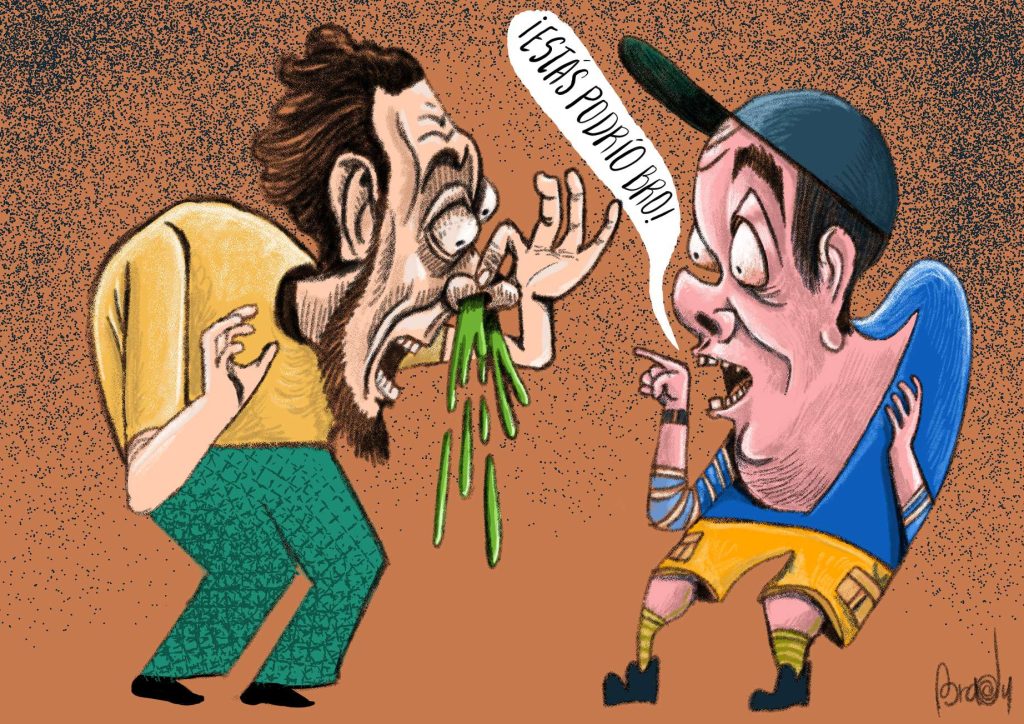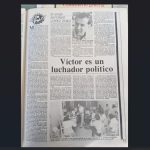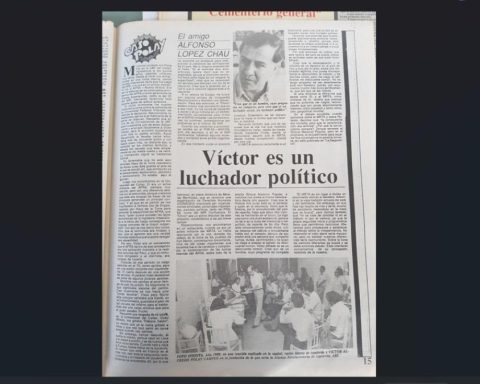Searching for topics rarely covered by traditional linguistics to liven up this column, I have come across the attractive field of diseases, illnesses and the peculiar appropriations that they generate in our way of speaking Spanish on the island. There is nothing more creative in the field of language than everyday use. Space that traces the complex paths through which a language evolves.
Following those random threads, for example, one can see the transformation undergone by certain terms that move from their original meaning to another assigned by popular movement. It seems to be the case of the word “embolism”, whose meaning in the field of medicine is very clear and strict, associated with a blood coagulation process that can obstruct an artery and cause severe damage.
But, among us, the association between embolism and obstruction-paralysis is very strangely used for what it originally designates (which we prefer to call “effusion”, “thrombosis”, etc.), and has come to refer to some type of intestinal obstruction or stoppage of digestion.
Thus, our mothers warn us not to swim in the sea after lunch, or not to take a cold shower immediately after eating, under pain of being affected by a embolism.
I have given myself the task of corroborating which of the most popular uses among us have been registered by the Royal Academy of the Spanish Language (RAE), either in its general dictionary or in that of Americanisms. It is surprising to find there terms that one would swear are authentic inventions of ours. But no, they have long been in use or have been incorporated as variants of a specific region of Latin America.
As unique contributions from Cuba to the list, with registered uses also in the Dominican Republic, we have the famous “eye of fish” and the “sirimba”. It also appears consigned as correct, although it seems scientifically improbable, the “empacho”. However, it does not clarify whether the method of “passing the hand” to cure it is legitimized by any medical institution.
Another one that sounds like an extreme fabulation is the “andancio”, whose entry is accompanied by a brief but clear information: mild epidemic disease. At what point “andar” ended in “andancio” is already the subject of a novel. Among us, an alternative variant can also be heard: “That thing that walks caught you”.
Continuing with the list of unexpected guests to the concert in the dictionary, we have other very popular terms: “the bunion” (displacement or deformation of the big toe bone), “la ciguatera” (food poisoning from fish consumption), the jipío ( sound indicative of respiratory congestion), “shingles” (viral disease whose visible sign is a very painful exanthema in an elongated shape), “el tabardillo” (sunstroke), “a murmur” (peculiar noise that is noticed after auscultating an organ of the body), or “the swallow” (infectious inflammation of the glands of the armpit).
Another interesting chapter, as I pointed out at the beginning, is that of terms that have developed a new meaning on the island, either by amplification or by deviation. This is the case of “muesmo” (it is also called “glanders” in some regions of Cuba) which, strictly speaking, refers only to a nasal condition but which for us describes a state of general malaise.
My mother also uses the term “alferecía” with a displaced meaning, which clinically describes a picture similar to that of epilepsy, but which for her illustrates any type of state of irritation, major discomfort, empingue… The one that does constitute an absolute displacement is the Cuban use, especially in the elderly or in rural environments, of the verb “correct” to refer to the action of defecating.
In a hospital environment it is even used as a euphemism to avoid ways of naming this act that may seem inappropriate to the speaker of a certain age. Another very Cuban variant in this same direction is “dar del cuerpo”.
The field of euphemisms and neologisms, ameliorative and periphrastic turns are also fertile ground when it comes to diseases or ailments of the body. Thus, of someone whose cause of death is not wanted to be explicit for some reason, it is said that he died of “a long and painful illness”, or in more colloquial contexts “he was already walking for that”, “he was screwed for a long time”. ”.
Our inventions are very creative to name a discomfort not associated with any specific condition, such as having “the body short”, being “spoiled”, “constipa’o”, “matungo”, with “intemperance”, with “ fever”, with “withered eyes”, with tremendous “morriña”, with “cuju cuju” (cough onomatopoeia).
Along the same lines, we speak of someone who “is sick”, or “fever has a fever”, who has “the face sucks”, or “is hala’o”. And for fatigue or decay, the product of illness, ailment or simple tiredness: “tumba’o” (serves for the body as a whole and also for specific parts, such as an eye, an arm, a leg), “mata’o ”, “derrenga’o”, “arrenga’o”, “desguabinao”, etc. All of them can be summed up in a single, clear and definitive sentence: “to be made a dick”.
However, the list of our inventions is long. And it will be a daunting task for language researchers to establish origins and deviations of phrases and terms. Our grandmothers, for example, of someone who didn’t look in good shape, used to say that he wasn’t “very Christian” or “very Catholic”. We have inherited very abstract notions, which say nothing but which everyone uses, like he “gave him something”, “gave him a jerk”, “gave him a patatús” (some say “patatún”).
And there are the imprecise terms. Very little is known about what characterizes the “evil eye”, but it is well known what the “cagaleras” consist of. Imprecise are also having “un air trabao”, or the wrist or waist “open”, or the neck or foot “virao”, or food “pasmá”, or pain “in the pit of the stomach”, or a “ penita”, or “aventazón” or “ventolera”, or a “whistle in the ear”.
No matter how much they warned us, our mothers never came to define for us what it was to give ourselves a “bad blow” or, even worse, give ourselves “a blow to the senses”; nor what it was like to get “a gallillazo”, that something went “down the old road”, or the danger that “blood would rise to our heads”. Although abstract or imprecise, a doctor can understand us if we talk to him about a “frying hair”, about someone who is “sick with nerves”, or who gave him a “lowering”, or got “burnt”, got “roasted”, “he lost his head”, his head is “skating”, he was left “turulato”, or “muengo”, or “ñangueteao”, or that he is “rotten with a cold”.
However, I think that only among Cubans we can identify where the famous “bone of joy” is, or what a “cuca” is. We even have conditions of hyperlocalized use such as the classic “parrots” from Pinar del Río. We can also define, and defend, because that is what “linguistic” science is all about, as authentic Cubanisms the terms “esnuncarse” (there are also those who say “unnuncarse”), “soponcio”, or the unclassifiable but sonorous and funny “terepe”. .
If you have any contribution, feel free to leave it here. Together we can continue building this beautiful archive of Cuban Spanish.
















